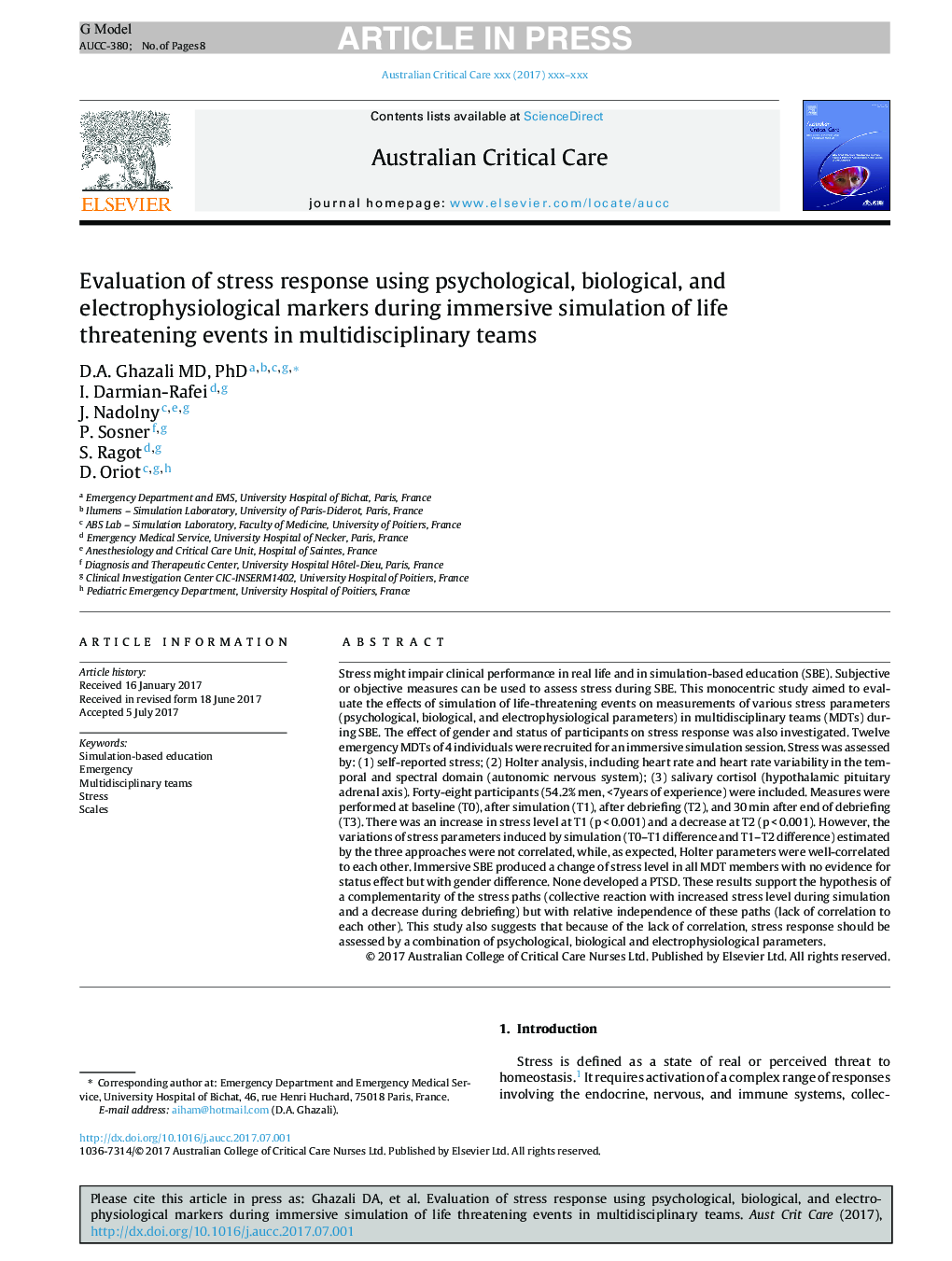| کد مقاله | کد نشریه | سال انتشار | مقاله انگلیسی | نسخه تمام متن |
|---|---|---|---|---|
| 8555733 | 1562780 | 2018 | 8 صفحه PDF | دانلود رایگان |
عنوان انگلیسی مقاله ISI
Evaluation of stress response using psychological, biological, and electrophysiological markers during immersive simulation of life threatening events in multidisciplinary teams
ترجمه فارسی عنوان
ارزیابی پاسخ استرس با استفاده از نشانگرهای روانشناختی، بیولوژیکی و الکتروفیزیولوژیک در طی شبیه سازی شبیه سازی حوادث تهدید کننده زندگی در تیم های چند رشته ای
دانلود مقاله + سفارش ترجمه
دانلود مقاله ISI انگلیسی
رایگان برای ایرانیان
کلمات کلیدی
آموزش مبتنی بر شبیه سازی، اضطراری، تیم های چند رشته ای، فشار، مقیاسها،
موضوعات مرتبط
علوم پزشکی و سلامت
پزشکی و دندانپزشکی
مراقبت های ویژه و مراقبتهای ویژه پزشکی
چکیده انگلیسی
Stress might impair clinical performance in real life and in simulation-based education (SBE). Subjective or objective measures can be used to assess stress during SBE. This monocentric study aimed to evaluate the effects of simulation of life-threatening events on measurements of various stress parameters (psychological, biological, and electrophysiological parameters) in multidisciplinary teams (MDTs) during SBE. The effect of gender and status of participants on stress response was also investigated. Twelve emergency MDTs of 4 individuals were recruited for an immersive simulation session. Stress was assessed by: (1) self-reported stress; (2) Holter analysis, including heart rate and heart rate variability in the temporal and spectral domain (autonomic nervous system); (3) salivary cortisol (hypothalamic pituitary adrenal axis). Forty-eight participants (54.2% men, <7years of experience) were included. Measures were performed at baseline (T0), after simulation (T1), after debriefing (T2), and 30 min after debriefing (T3). There was an increase in stress level at T1 (p < 0.001) and a decrease at T2 (p < 0.001). However, the variations of stress parameters induced by simulation (T0-T1 difference and T1-T2 difference) estimated by the three approaches were not correlated, while, as expected, Holter parameters were well-correlated to each other. Immersive SBE produced a change of stress level in all MDT members with no evidence for status effect but with gender difference. None developed a PTSD. These results support the hypothesis of a complementarity of the stress paths (collective reaction with increased stress level during simulation and a decrease during debriefing) but with relative independence of these paths (lack of correlation to each other). This study also suggests that because of the lack of correlation, stress response should be assessed by a combination of psychological, biological and electrophysiological parameters.
ناشر
Database: Elsevier - ScienceDirect (ساینس دایرکت)
Journal: Australian Critical Care - Volume 31, Issue 4, July 2018, Pages 226-233
Journal: Australian Critical Care - Volume 31, Issue 4, July 2018, Pages 226-233
نویسندگان
Daniel Aiham MD, PhD, Ivan MD, Jerome RN, Philippe MD, PhD, Stephanie MD, PhD, Denis MD, PhD,
